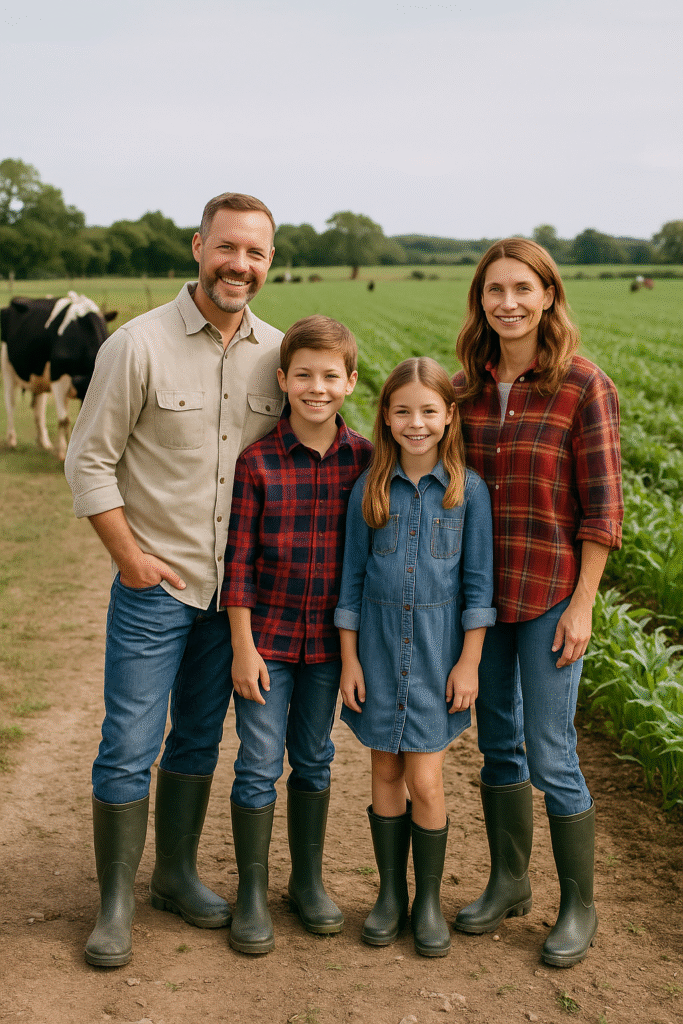
The 5 Best-Selling Gumboots for Every Kind of Farming: Dairy, Cropping, Pig, and Horticulture
Why Gumboots Matter on Every Farm
Affiliate Disclosure:
This site contains affiliate links. I may earn a small commission if you make a purchase, at no extra cost to you. Thanks for your support!
A good pair of gumboots is as essential as your farm gate. Whether you’re milking cows at dawn, planting seedlings in a market garden, or just heading out for a wet-weather chore, finding the best gumboot for farming makes all the difference- they are like your everyday companion.
But here’s the thing—not all gumboots are made equal.
Some are built for heavy-duty work in the dairy shed. Others shine in lighter horticultural roles. And then there are boots that simply make you feel good doing the dirty work—literally.
In this post, we’ll share 5 of the best-selling gumboots and explain exactly which farm job they’re best suited for. Perfect for:
- Dairy farmers
- Cropping and field workers
- Pig farmers
- Horticulture and lifestyle block owners
- Urban visitors heading out rural
The 5 Best-Selling Gumboots (And Where They Belong)
1. Dunlop Chesapeake Steel‑Toe Gumboots
Best for: Dairy sheds, laneways, general farm use
Why it’s tops: 100% waterproof PVC, certified steel toe, lightweight for long days.
Pros:
Certified steel toe for crush protection
Waterproof with bay-loc outsole
Cushioned, replaceable insole
Cons:
Not insulated—add warm socks in winter
2. Bogs Classic High Insulated Boots
Best for: Cropping work, wet paddocks, and cold weather
Why it’s tops: Neoprene-lined, comfort-rated to –40 °C, flexible and supportive for walking.
Pros:
Warm and waterproof
Pull-on handles
Comfortable for long workdays
Cons:
Too warm for summer climates
On the pricier side
3. Tingley Flite 26256 Composite Safety Toe Knee Boots
Best for: Pig farming, heavy washdown, muddy pens
Why it’s tops: Tall, chemical-resistant, strong in messy conditions
Pros:
Full leg protection
Durable against chemicals and washdowns
Cons:
No insulation
A bit heavy for light jobs
4. Servus MAX 15″ PVC Work Boots
Best for: Livestock feedlots, dairy, paddocks, areas with chemical/fuel exposure
Why it’s tops: Triple Density PVC, steel toe options, and excellent arch support
Pros:
Chemical-resistant and waterproof
Self-cleaning outsole
Great grip in wet areas
Cons:
Not insulated
Overkill for light work
5. Muck Boot Muckster II Ankle Boots
Best for: Horticulture, gardening, lifestyle block chores
Why it’s tops: Slip-on design, flexible ankle cut, breathable and stylish
Pros:
Lightweight for bending and kneeling
100% waterproof with breathable lining
Easy to get on and off
Cons:
Not ideal for deep mud
No steel toe
Comparing Features: What to Look for in Farming Gumboots
| Feature | Best For | Considerations |
| Steel Toe | Pig/dairy/heavy machinery | Adds weight; cold without thick socks |
| Knee‑High Cut | Wet, muddy, or pen work | Restricts flexibility |
| Insulation | Cropping in cold or winter tasks | Overheats in summer |
| Ankle Cut | Gardening, lifestyle blocks | Not ideal for mud or flood-prone areas |
| PVC Material | Dairy, pig, disinfectant-heavy | May crack in extreme sun or old age |
| Self-Cleaning Sole | Slippery yards, sheds | May be bulky on dry, dusty ground |
Bonus Tip: Keep a Spare Pair
Many farmers keep two gumboot types:
- A light pair for quick chores, dry work, or gardening
- A heavy-duty pair for mucking out, milking, or rainy paddocks
If you host farm tours or have workers, keeping spare pairs in common sizes can be a game-changer too.
Final Thoughts: Right Gumboot = Happy Feet
Urban or rural, hobby gardener or full-time farmer—gumboots aren’t just footwear. They’re part of your workday safety, comfort, and routine.
Whether it’s concrete milking sheds, veggie plots, muddy pig pens, or general paddock jobs, the right boot for the right task makes life easier—and dryer.
